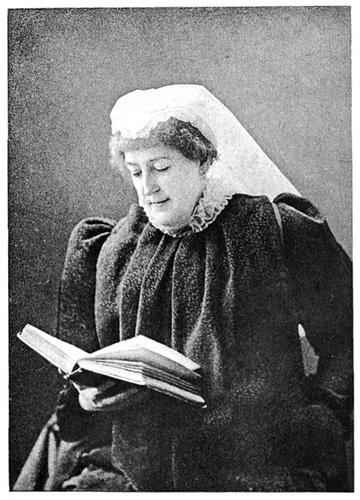
Lady Isabel Burton, wife of Sir Richard Francis Burton
[The following is an excerpt from The Romance of Lady Isabel with her reflections on visiting Jedda on the way to India in 1876. The entire book is available online.]
I was delighted with my first view of Jeddah. It is the most bizarre and fascinating town. It looks as if it were an ancient model carved in old ivory, so white and fanciful are the houses, with here and there a minaret. It was doubly interesting to me, because Richard came here by land from his famous pilgrimage to Mecca. Mecca lies in a valley between two distant ranges of mountains. My impression of Jeddah will always be that of an ivory town embedded in golden sand.
We anchored at Jeddah for eight days, which time we spent at the British Consulate on a visit. The Consulate was the best house in all Jeddah, close to the sea, with a staircase so steep that it was like ascending the Pyramids. I called it the Eagle’s Nest, because of the good air and view. It was a sort of bachelors’ establishment; for in addition to the Consul and Vice-Consul and others, there were five bachelors who resided in the building, whom I used to call the “Wreckers,†because they were always looking out for ships with a telescope. They kept a pack of bull-terriers, donkeys, ponies, gazelles, rabbits, pigeons; in fact a regular menagerie. They combined Eastern and European comfort, and had the usual establishment of dragomans, kawwasses, and servants of all sizes, shapes, and colour. I was the only lady in the house, but we were nevertheless a very jolly party.
Our first excursion was to Eve’s Tomb, as it is called, a large curious building in a spacious enclosure. Two or three holy people are buried here, and the place commands a lovely view of the distant mountains, beyond which lies Mecca.

Arab camel drivers
The inhabitants of Jeddah are very interesting in many ways. There are some two hundred nautch-girls there; but they are forbidden to dance before men, though I have heard that the law can be evaded on occasions. In the plains there are two different types of Arabs: the Bedawin, and the “settled men.†The latter are a fine, strong, healthy race, though very wild and savage. We used frequently to ride out into the desert and make excursions. I would have given anything to have gone to Mecca. It was hard to be so near, and yet to have to turn round and come back. There was a rumour that two Englishmen had gone up to Mecca for a lark, and had been killed. This was not true. But all the same Mecca was not safe for a European woman, and it was not the time to show my blue eyes and broken Arabic on holy ground. I therefore used to console myself by returning from our expeditions in the desert through the Mecca Gate of Jeddah, and then riding through the bazars, half dark and half lit, to see the pilgrims’ camels. The bazars literally swarmed with a picturesque and variegated mob, hailing from all lands, and of every race and tongue. We were not interfered with in any way; though had it been 1853, the year when Richard went to Mecca, to have taken these rides in the desert, and to have walked through the Mecca Gate, would most certainly have cost us our lives. I also saw the khan where Richard lived as one of these pilgrims in 1853, and the minaret which he sketched in his book on Mecca. While we were at Jeddah the Governor and all those who knew the story of his pilgrimage to Mecca called on us, and were very civil.
Excerpt from Isabel Burton, The Romance of Lady Isabel Burton